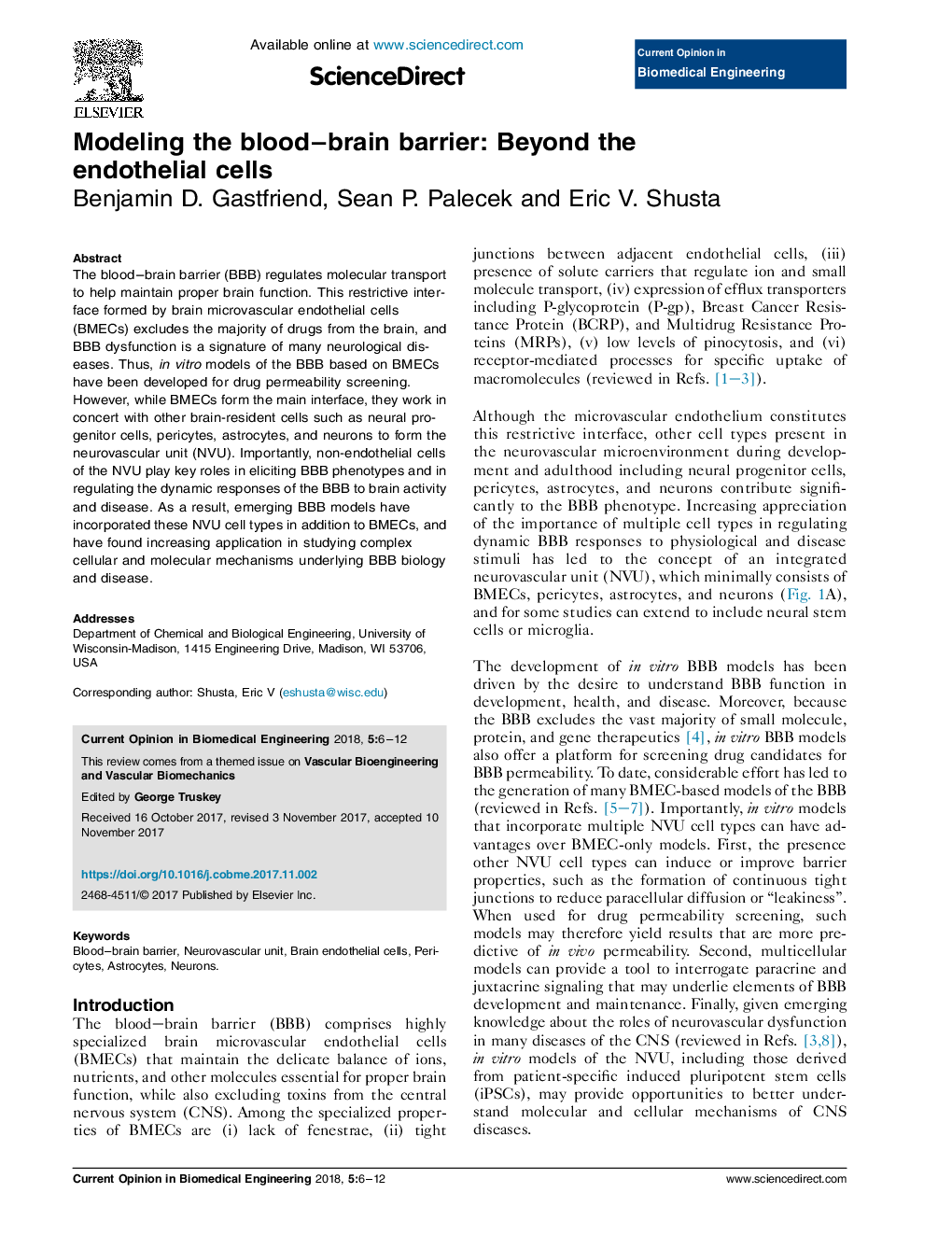| Article ID | Journal | Published Year | Pages | File Type |
|---|---|---|---|---|
| 8918961 | Current Opinion in Biomedical Engineering | 2018 | 7 Pages |
Abstract
The blood-brain barrier (BBB) regulates molecular transport to help maintain proper brain function. This restrictive interface formed by brain microvascular endothelial cells (BMECs) excludes the majority of drugs from the brain, and BBB dysfunction is a signature of many neurological diseases. Thus, in vitro models of the BBB based on BMECs have been developed for drug permeability screening. However, while BMECs form the main interface, they work in concert with other brain-resident cells such as neural progenitor cells, pericytes, astrocytes, and neurons to form the neurovascular unit (NVU). Importantly, non-endothelial cells of the NVU play key roles in eliciting BBB phenotypes and in regulating the dynamic responses of the BBB to brain activity and disease. As a result, emerging BBB models have incorporated these NVU cell types in addition to BMECs, and have found increasing application in studying complex cellular and molecular mechanisms underlying BBB biology and disease.
Related Topics
Physical Sciences and Engineering
Engineering
Biomedical Engineering
Authors
Benjamin D. Gastfriend, Sean P. Palecek, Eric V. Shusta,
